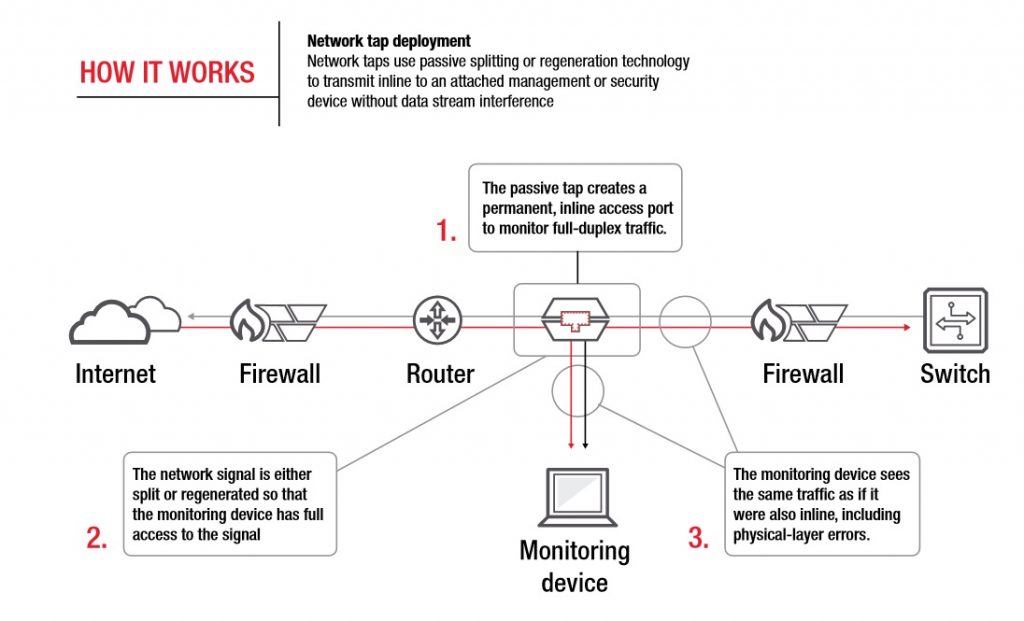SCENARIO
Proper network access starts with a tap. Taps provide non-intrusive access to data flowing across the network and enable the monitoring of network links. Taps are primarily used to optimize passive monitoring of a network link. They are normally placed between any two network devices, including switches, routers, and firewalls, to provide network and security personnel a connection for monitoring devices. Taps are used for troubleshooting and offer continuous, non-disruptive network access.
Protocol analyzers, Remote Network Monitoring (RMON) probes, intrusion detection systems (IDSs) and IPSs, and other monitoring tools can now be easily connected to and removed from the network when needed. By using a tap, you also eliminate the need to schedule downtime to run cabling directly to the monitoring device from network devices, thus saving time and eliminating possible cabling issues.
Any monitoring device connected to a network device receives the same traffic as if it were inline, including all errors. This is achieved as the tap duplicates all traffic on the link and forwards it to the monitoring ports. Taps do not introduce delay nor alter the content or structure of the data. Fiber taps are usually passive and do not require power. Copper taps and other powered fiber taps have relays and battery backups to allow traffic to continue to flow even when power is removed.
IXIA SOLUTIONS
The Ixia family of taps provides 100% visibility and permanent passive access points into your network. When a monitoring tool is needed, simply connect the device to the tap instead of taking down the link and interrupting traffic. Taps pass all network traffic—including L1 and L2 errors—without introducing bottlenecks or points of failure. Regardless of interface or location in the network, we provide a tap solution, supporting copper, multimode, and single-mode fiber at speeds of up to 100Gbps with media conversion models available.

